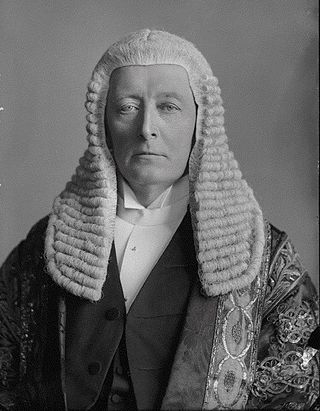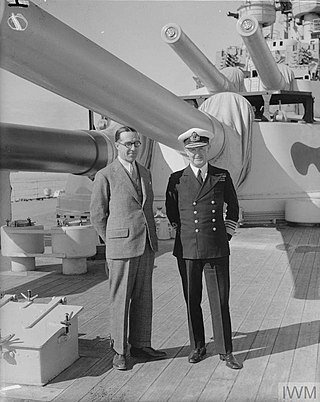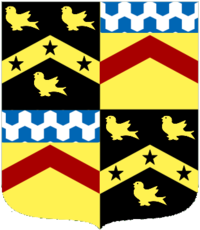Lord Ruthven of Freeland is a title in the Peerage of Scotland. It was created in 1651 for Thomas Ruthven. He was the grandson of Alexander Ruthven, younger son of William Ruthven, 2nd Lord Ruthven. The letters patent creating the peerage is said to have been burnt with the House of Freeland in 1750, and the remainder to the peerage is not accurately known. However, as the dignity was retained on the Union Roll, it has been presumed that the honour was to heirs-general. Lord Ruthven of Freeland was succeeded by his son, the second Lord. He never married and on his death in 1722 the title and estates devolved by entail upon his youngest sister, Jean. On her death the estates passed to her nephew Sir William Cunningham, 3rd Baronet, of Cunninghamhead. He was the only son of Anne, elder sister of the third Lady Ruthven and also heir of line. He assumed the surname of Ruthven upon the death of his aunt, but lived only six months after his accession to the estates and never assumed the title.

Earl of Seafield is a title in the Peerage of Scotland. It was created in 1701 for James Ogilvy, who in 1711 succeeded his father as 4th Earl of Findlater. The earldoms of Findlater and Seafield continued to be united until 1811, when the earldom of Findlater became dormant, while the earldom of Seafield remains extant.

Earl St Aldwyn, of Coln St Aldwyn in the County of Gloucester, is a title in the Peerage of the United Kingdom. It was created in 1915 for the prominent Conservative politician Michael Hicks Beach, 1st Viscount St Aldwyn, known from 1854 to 1907 as Sir Michael Hicks Beach, 9th Baronet, of Beverston. He was Chancellor of the Exchequer from 1885 to 1886 and again from 1895 to 1902. Hicks Beach had already been created Viscount St Aldwyn, of Coln St Aldwyn in the County of Gloucester, in 1906, and was made Viscount Quenington, of Quenington in the County of Gloucester, at the same time he was given the earldom. Both titles are in the Peerage of the United Kingdom. He was succeeded by his grandson, the second Earl, the son of Michael Hicks Beach, Viscount Quenington, Member of Parliament for Tewkesbury, who was killed in action in 1916. Lord St Aldwyn was also a Conservative politician and was Captain of the Honourable Corps of Gentlemen-at-Arms between 1958 and 1964 and 1970 and 1974. As of 2018 the titles are held by his eldest son, the third Earl, who succeeded in 1992.

Viscount Galway is a title that has been created four times in the Peerage of Ireland. The first creation came in 1628 in favour of Richard Burke, 4th Earl of Clanricarde. He was made Earl of St Albans in the Peerage of England at the same time. The second creation came in the Peerage of Ireland in 1687 in favour of Ulick Bourke. He was made Baron Tyaquin at the same time, also in the Peerage of Ireland. However, both titles became extinct on his early death in 1691. The third creation came in the Peerage of Ireland in 1692 in favour of the French soldier and diplomat Henry de Massue, Marquis de Ruvigny, who was created Baron Portarlington, also in the Peerage of Ireland, at the same time. He was made Earl of Galway in 1697. However, both titles became extinct on his death in 1720.

Viscount Monck, of Ballytrammon in the County of Wexford, is a title in the Peerage of Ireland. It was created in 1801 for Charles Monck, 1st Baron Monck. He had already been created Baron Monck, of Ballytrammon in the County of Wexford, in 1797, also in the Peerage of Ireland. His eldest son, the second Viscount, was in 1822 created Earl of Rathdowne in the Peerage of Ireland. However, this title became extinct on his death, while he was succeeded in the other titles by his younger brother, the third Viscount. The latter's son, the fourth Viscount, served as the 1st Governor General of Canada. In 1866, he was given the title Baron Monck, of Ballytrammon in the County of Wexford, in the Peerage of the United Kingdom. This title gave the viscounts a seat in the Westminster House of Lords until the passing of the House of Lords Act 1999. As of 2012 the titles are held by his great-great-grandson, the seventh Viscount, who succeeded his father in 1982. He does not use his titles.

Viscount Hambleden, of Hambleden in the County of Buckingham, is a title in the Peerage of the United Kingdom. It was created in 1891 for Emily Danvers Smith, in honour of her deceased husband, the businessman and Conservative politician William Henry Smith. Both their son, the second Viscount, and grandson, the third Viscount, were involved in the management of the family business, the stationer and retailer W H Smith.

Viscount Runciman of Doxford, of Doxford in the County of Northumberland, is a title in the Peerage of the United Kingdom. It was created in 1937 for the Hon. Walter Runciman, a politician whose career included service as a Member of Parliament, President of the Board of Trade and Lord President of the Council. He was the son and heir apparent of the shipping magnate and Liberal politician Walter Runciman, who had been created a Baronet in the Baronetage of the United Kingdom in 1906 and Baron Runciman, of Shoreston in the County of Northumberland, in 1933, also in the Peerage of the United Kingdom. As his father was still alive at the time of the creation of the viscountcy the title of this peerage was Runciman of Doxford rather than simply Runciman. As of 2020 the titles are held by the first Viscount's great-grandson, the fourth Viscount, who succeeded his father in 2020. He is a well-known political scientist at the University of Cambridge.

Viscount Bridport is a title that has been created twice, once in the Peerage of Great Britain and once in the Peerage of the United Kingdom. The first creation became extinct in 1814, while the second creation is still extant.

Viscount Mersey, of Toxteth in the County Palatine of Lancaster, is a title in the Peerage of the United Kingdom. It was created in 1916 for the lawyer and politician John Bigham, 1st Baron Mersey. He had already been created Baron Mersey, of Toxteth in the County Palatine of Lancaster, in 1910, also in the Peerage of the United Kingdom. His son, the second Viscount, was a Deputy Speaker of the House of Lords and also served as Liberal Chief Whip in the House of Lords from 1944 to 1949. His son, the third Viscount, married Katherine Petty-Fitzmaurice, 12th Lady Nairne, the eldest daughter of Henry Petty-Fitzmaurice, 6th Marquess of Lansdowne and 10th Lord Nairne. They were both succeeded by their son, the fourth Viscount Mersey and thirteenth Lord Nairne. As of 2017 the titles are held by the latter's son, the fifth Viscount, who succeeded in 2006.
Viscount Mackintosh of Halifax, of Hethersett in the County of Norfolk, is a title in the Peerage of the United Kingdom. It was created on 10 July 1957 for the businessman and public servant Harold Mackintosh, 1st Baron Mackintosh of Halifax. He was the owner of the confectionery business of John Mackintosh & Sons Ltd and for many years Chairman of the National Savings Committee. Mackintosh had already been created a baronet, of Halifax in the West Riding of the County of York, in the Baronetage of the United Kingdom on 28 January 1935, and Baron Mackintosh of Halifax, of Hethersett in the County of Norfolk, on 6 February 1948, also in the Peerage of the United Kingdom. As of 2023 the titles are held by his grandson, the third Viscount, who succeeded his father in 1980.

Viscount Selby, of the City of Carlisle, is a title in the Peerage of the United Kingdom. It was created in 1905 for the Liberal politician Sir William Court Gully upon his retirement as Speaker of the House of Commons. He was the son of the physician James Manby Gully. The title of the viscountcy derived from the maiden name of Gully's wife, Elizabeth Selby, daughter of Thomas Selby. As of 2017 the title is held by the first Viscount's great-great-great-grandson, the sixth Viscount, who succeeded his father in 2001.

Viscount Samuel, of Mount Carmel and of Toxteth in the City of Liverpool, is a title in the Peerage of the United Kingdom. It was created on 8 June 1937 for the Liberal politician and former High Commissioner of the British Mandate of Palestine, Herbert Samuel. His grandsons, the third and fourth Viscounts, were respectively a prominent Israeli chemist and neurobiologist, and an oil executive. As of 2014 the title is held by the 4th Viscount's son, who succeeded as fifth Viscount in that year.
Viscount Stuart of Findhorn, of Findhorn in the County of Moray, is a title in the Peerage of the United Kingdom. It was created on 20 November 1959 for the Conservative politician the Hon. James Stuart after his retirement from the House of Commons. Stuart was the third son of Morton Gray Stuart, 17th Earl of Moray. As of 2017 the title is held by his grandson, the third Viscount, who succeeded his father in 1999.

Viscount Devonport, of Wittington in the County of Buckingham, is a title in the Peerage of the United Kingdom. It was created on 22 June 1917 for the Liberal politician and former Member of Parliament for Devonport, Hudson Kearley, 1st Baron Devonport. He had already been created a Baronet, of Wittington in the Parish of Medmenham in the County of Buckingham on 22 July 1908, and Baron Devonport, of Wittington in the County of Buckingham, on 15 July 1910. As of 2017 the titles are held by his grandson, the third Viscount, who succeeded his father in 1973.

Baron Hardinge of Penshurst, in the County of Kent, is a title in the Peerage of the United Kingdom. It was created in 1910 for the diplomat the Hon. Sir Charles Hardinge, Viceroy and Governor-General of India from 1910 to 1916. He was the second son of Charles Hardinge, 2nd Viscount Hardinge. His son, the second Baron, served as private secretary to both King Edward VIII and King George VI.
Baron Hives, of Duffield in the County of Derby, is a title in the Peerage of the United Kingdom. It was created 7 July 1950 for the Ernest Hives, Chairman of Rolls-Royce Ltd. As of 2010 the title is held by his grandson, the third Baron, who succeeded his uncle in 1997.

Baron Grimston of Westbury, of Westbury in the County of Wiltshire, is a title in the Peerage of the United Kingdom. It was created in 1964 for the Conservative politician and former Deputy Speaker of the House of Commons, Sir Robert Grimston, 1st Baronet. He had already been created a baronet in 1952. Grimston was the son of Reverend Canon the Hon. Robert Grimston, third son of James Grimston, 2nd Earl of Verulam. As of 2017 the titles are held by his grandson, the third Baron, who succeeded his father in 2003.
Baron Kenswood, of St Marylebone in the County of London, is a title in the Peerage of the United Kingdom. It was created in 1951 for the professional violinist and welfare worker for the blind, Ernest Whitfield. As of 2017 the title is held by his grandson, the third Baron, who succeeded in 2016.

Walter Turner Monckton, 1st Viscount Monckton of Brenchley, was a British lawyer and politician.

Major-General Gilbert Walter Riversdale Monckton, 2nd Viscount Monckton of Brenchley, served in the British Army from 1939 to 1967. He was Army director of public relations in the 1960s when the conduct of the Army's personnel came under scrutiny during the Profumo affair.













